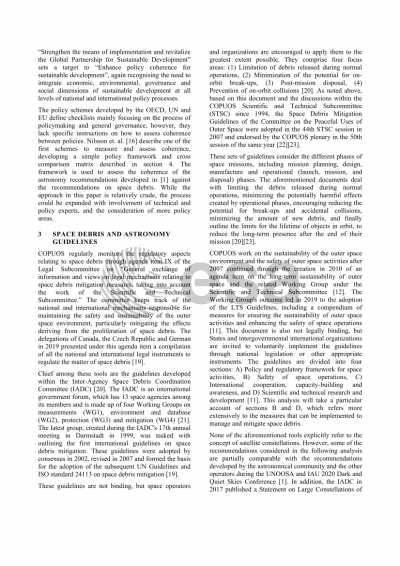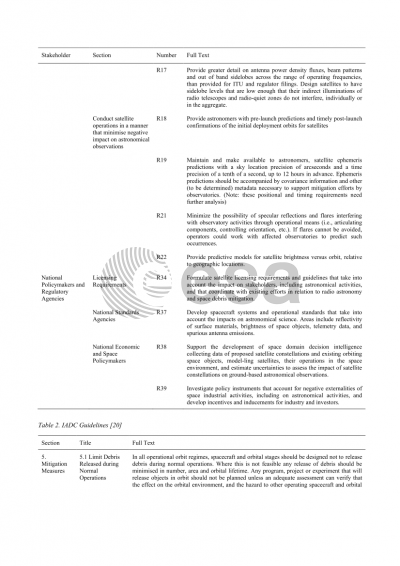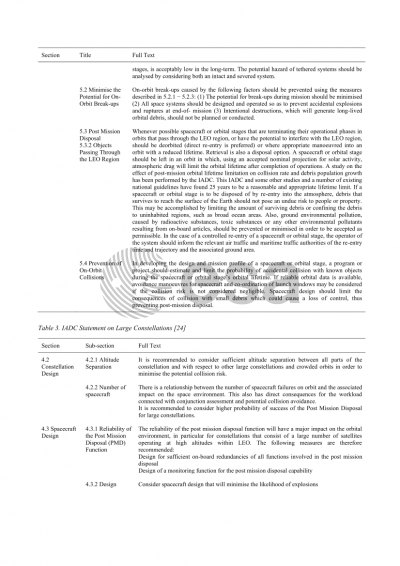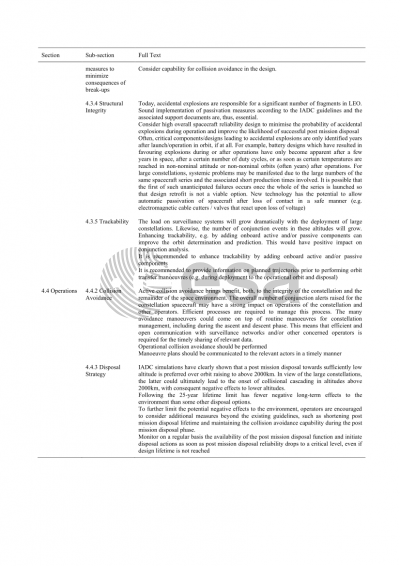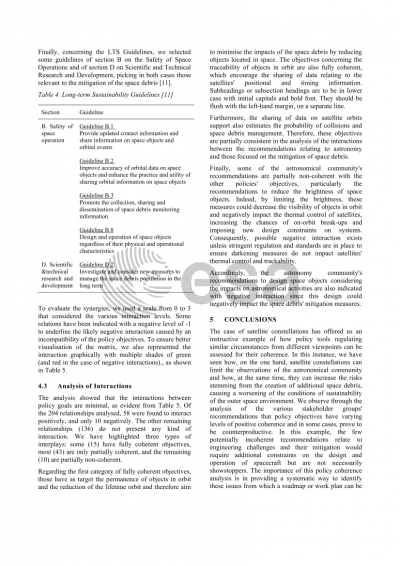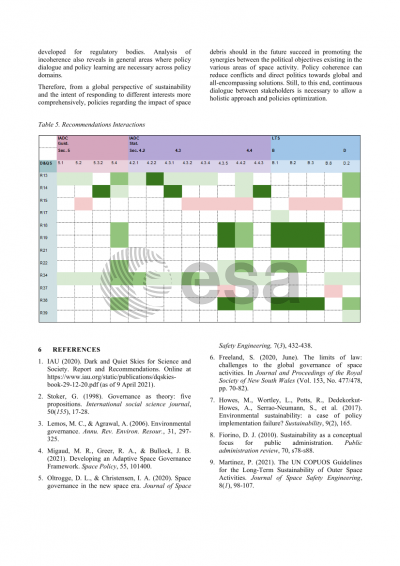Document details

Abstract
Despite their potential societal and technological benefits, the emergence of satellite constellations brings major challenges for the long term sustainability of low earth orbit and in particular, the growing threat of space debris. Satellite constellations also threaten the conduct of astronomy from both ground and space-based observatories. Since the launch of SpaceX’s first batch of Starlink satellites, astronomers quickly organized, established contact with SpaceX and other companies, and formed several working groups to look at the impacts on science and possible mitigations. A number of policy recommendations are emerging, which address mitigation actions for the astronomy community, observatories, industry and government regulators.
As astronomers begin to make recommendations to industry and government on satellite designs, mission profiles and operator practices, the extent to which these recommendations interact with policies and guidelines on space debris mitigation should be considered. With the ultimate goal of space debris mitigation to ensure long term sustainability of low earth orbit, a sustainability perspective can inform policymaking by applying the concept of policy coherence. In this approach, policy coherence stresses integrated policy decision making across multiple dimensions, exploiting mutual synergies, and consideration of unintended side effects, and is incorporated in one of the UN Sustainable Development Goals. In the context of space debris mitigation, policy coherence should result in interoperability in practices, standards, and data across different space actors and policy domains, to achieve the goal of debris mitigation and sustainability.
This paper first presents an analytical framework, which allows astronomy and space debris policymakers to consider their mutual policy coherence. Secondly, recent recommendations proposed by the astronomy community are reviewed, and their coherence against space debris mitigation guidelines are tested. Finally, the framework is expanded to show how policy coherence considerations can help space policymakers within the broader landscape of space governance.
Preview


